- Home
- Prelims
- Mains
- Current Affairs
- Study Materials
- Test Series
 EDITORIALS & ARTICLES
EDITORIALS & ARTICLES
29th Oct 2021
ASSAM OVERSHOOTS DETENTION CAMP DEADLINE
The Assam Government has overshot a 45-day deadline set by the Guwahati High Court for the completion of a standalone detention centre for declared foreigners.
Highlights:

 It is a Centrally Sponsored Scheme worth of a ₹ 5,000-crore with some Central Sector components.
Components:
It is a Centrally Sponsored Scheme worth of a ₹ 5,000-crore with some Central Sector components.
Components:


 The two different methods used by the innovator include-
The two different methods used by the innovator include-
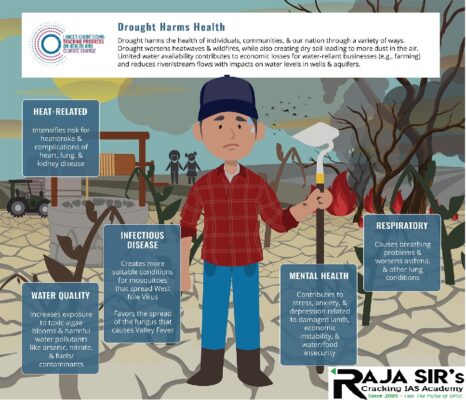
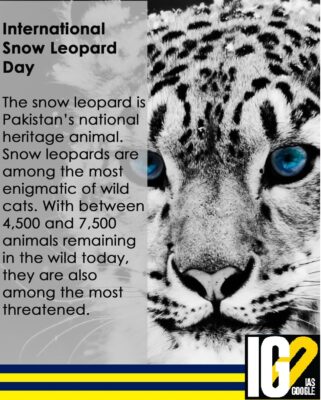

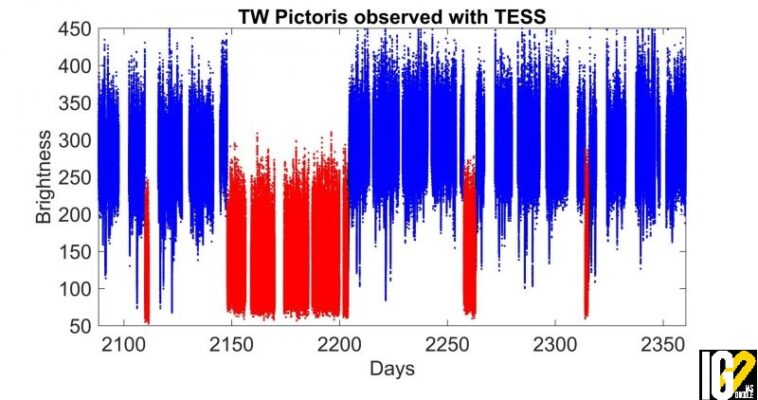
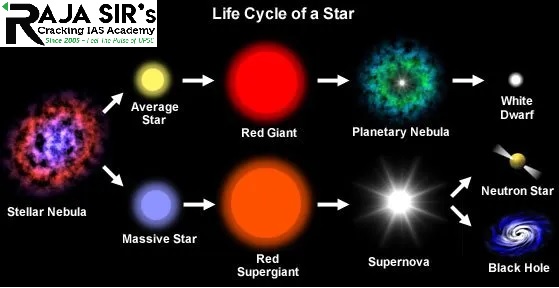
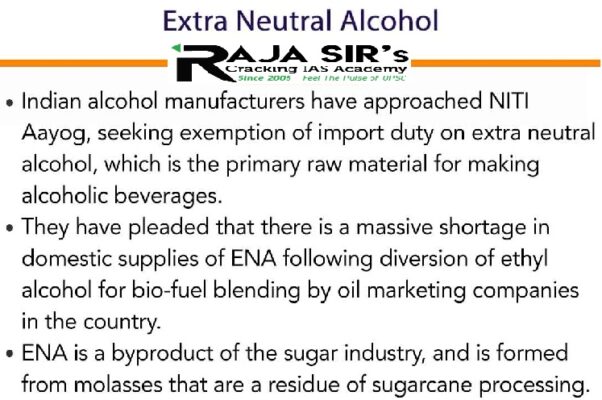

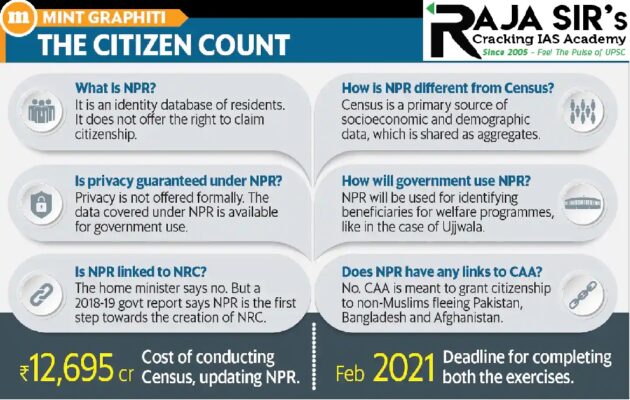

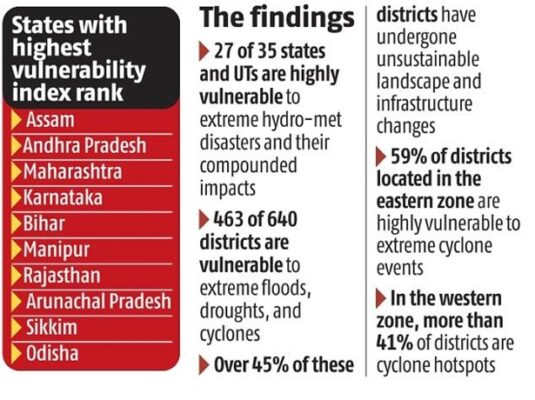

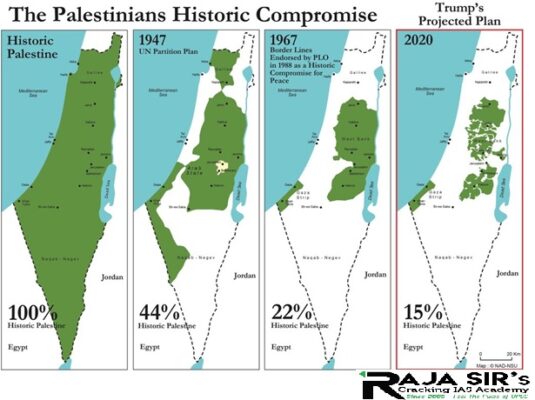

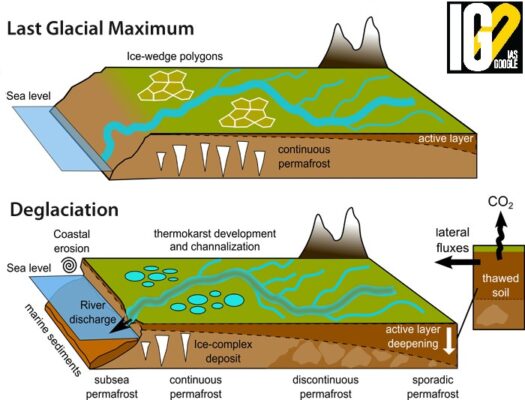
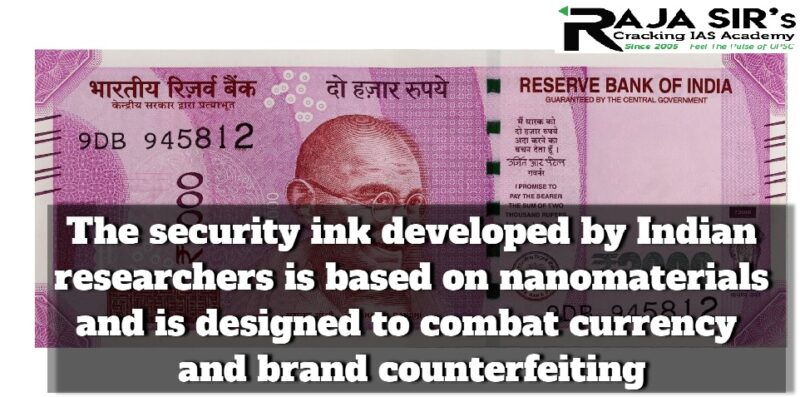

- Earlier, the high court asked the State Government to complete the construction of the detention centre, at Matia in Goalpara district and file a status report within 45 days.
- The court sought the shifting of 177 inmates across six existing detention centres.
- A declared foreigner is a person marked by Foreigners’ Tribunals (FTs) in Assam, allegedly failing to prove their citizenship after the State police’s Border wing marks him or her as an illegal immigrant.
- Foreigners’ Tribunals are quasi-judicial bodies established as per the Foreigners Tribunal Order, 1964 and the Foreigners’ Act, 1946.
- It is for those who have been left out in the National Register of Citizens (NRC) list or have been marked as ‘D’ meaning doubtful.
- Under the provisions of Foreigners’ Act, 1946 only Foreigner Tribunals have the right to declare a person as a foreigner.
- Non-inclusion of a person’s name in the NRC does not by itself amount to him/her being declared a foreigner.
- Election Commission of India (ECI) can refer cases of Doubtful voters to the local superintendents of police, who refers them to a tribunal to verify their citizenship.
- The persons excluded from the final draft of National Register of Citizens (NRC) can appeal before the FTs to prove their citizenship
- The Tribunal have the powers of a civil court while trying a suit under the Code of Civil Procedure, 1908.
- It can summon and ask for the attendance of any person and examine him/her on oath.
- It can ask anyone to produce the required documents.
- The Tribunal can commission examining any witness, as and when required.
 It is a Centrally Sponsored Scheme worth of a ₹ 5,000-crore with some Central Sector components.
Components:
It is a Centrally Sponsored Scheme worth of a ₹ 5,000-crore with some Central Sector components.
Components:
- Centrally Sponsored Scheme (CSS) Components:
- Ayushman Bharat - Health & Wellness Centres (AB-HWCs) in rural areas:
- Support for infrastructure development for Sub-Health Centres in 7 High Focus States (Bihar, Jharkhand, Odisha, Punjab, Rajasthan, Uttar Pradesh and West Bengal) and 3 North Eastern States (Assam, Manipur and Meghalaya).
- Ayushman Bharat - Health & Wellness Centres (AB-HWCs) in Urban areas:
- Support for 11044 Urban Health & Wellness Centres across the country.
- Block Public Health Units (BPHUs):
- Support for 3382 BPHUs in 11 High Focus States/ UTs (Assam, Bihar, Chhattisgarh, Himachal Pradesh, UT - Jammu and Kashmir, Jharkhand, Madhya Pradesh, Odisha, Rajasthan, Uttar Pradesh and Uttarakhand).
- Integrated District Public Health Laboratories in all districts.
- Critical Care Hospital Blocks in all districts with a population more than 5 lakhs, in state government medical colleges / District Hospitals.
- Central Sector (CS) Components
- Critical Care Hospital Blocks in 12 Central Institutions.
- Strengthening surveillance of infectious diseases and outbreak response.
- Support for 20 Metropolitan Surveillance Units, 5 Regional NCDCs and implementation of IHIP in all states.
- Strengthening surveillance capacities at Points of Entry.
- Support for 17 new Points of Entry Health Units and Strengthening of 33 existing Units.
- Strengthening Disaster and Epidemic Preparedness. Support for 15 Health Emergency Operation Centres & 2 Container based mobile hospitals.
- Under the mission various infrastructure will be setup including;
- A national institution for one health
- Four new national institutes for virology
- A regional research platform for WHO South East Asia Region
- Nine biosafety level-III laboratories
- Five new regional national centre for disease control
- To fill gaps in public health infrastructure, especially in critical care facilities and primary care in both urban and rural areas.
- To establish an IT-enabled disease surveillance system through a network of surveillance laboratories at block, district, regional and national levels.
- Ensure a robust system for detecting, investigating, preventing, and combating public health emergencies and disease outbreaks
- Critical care services will be available in all the districts of the country with more than five lakh population through Exclusive Critical Care Hospital Blocks, while the remaining districts will be covered through referral services.
- The scheme will aid the other health schemes like Ayushman Bharat Digital Mission (ABDM), a flagship digital initiative involving the creation of a unique health ID for every citizen, and also a digital healthcare professionals and facilities registry.
- People will have access to a full range of diagnostic services in the public healthcare system through a network of laboratories and integrated public health labs across the country.

- It is a two-year Certificate Program in Public Policy and Management offered by Indian Institute of Management (IIMs).
- Initiative of: Ministry of Skill Development and Entrepreneurship (MSDE)
- It is being implemented in collaboration with State Skill Development Missions (SSDMs).
- To create strong convergence between education and skills.
- Focus on developing skills for local needs gives impetus to the "vocal for local".
- To create opportunity for young, dynamic individuals to enhance skill development at the grassroots.
- To create credible plans and identify barriers in raising employment, economic output, and promote livelihoods in rural areas.
- It is designed under Skills Acquisition and Knowledge Awareness for Livelihood Promotion (SANKALP).
- Eligibility-
- One must be in 21-30 years age-group
- a graduation degree from a recognized university
- A citizen of India.
- It is launched on a pilot basis in 75 districts across Gujarat, Karnataka, Meghalaya, Rajasthan, Uttar Pradesh and Uttarakhand.
- It is launched by the Ministry of Skill Development and Entrepreneurship in 2018.
- It is a centrally sponsored scheme.
- Aim:
- To improve short-term skill training through strengthening institutions.
- To bring in better market connectivity.
- To include marginalized sections of the society.
- Objective:
- To enhance institutional mechanisms for skills development.
- Increase access to quality and market-relevant training for the work force.
- To reduce the mismatch between the supply and demand of skilled manpower.
- Frame work:
- Institutional Strengthening (at National, State & District level);
- Quality Assurance of skill development programs;
- Inclusion of marginalized population in skill development;
- Expanding Skills through Public-Private Partnerships (PPPs).

- National Load Despatch Centre (NLDC), POSOCO is the Nodal Agency for facilitating the Green Day Ahead Market.
- The Green Day-ahead market will operate in an integrated way with the conventional day-ahead market.
- The Exchanges will offer the market participants to submit bids together for both conventional and renewable energy through the separate bidding windows.
- The clearance will take place in a sequential manner - renewable energy bids will be cleared first in accordance with the must run status of the renewables, followed by conventional segment.
- This mechanism will allow renewable energy sellers to subsequently bid in the conventional segment should their bids remain uncleared in the green market.
- There will be separate price discoveries for the both the conventional and renewables.
- This will deepen the green market and will provide competitive price signals, besides offering an opportunity to the market participants to trade in green energy, in the most transparent, flexible, competitive, and efficient manner.
- The market-based competitive prices will provide option to renewable generators to sell power as well as accelerate the renewable capacity addition towards the Government’s vision of building India as a sustainable and efficient energy economy.
- The distribution utilities would be able to sell surplus renewable power generated in their area.
- The obligated entities (distribution licensee, open access consumers and captive power consumers) would also be able to meet the RPO target by directly buying green power from the power exchange.
- The non-obligated entities will be able to buy power on voluntary basis and help increasing the share of green power.
- The introduction of GDAM is expected to create a domino effect that will lead to a gradual shift from PPA based contract to market-based models which will build and deepen the markets to the next level, paving the way for India to meet its ambitious target of 450 GW green capacity by 2030.
- The GDAM participation would be reduction of curtailment of green power, unlocking untapped renewable energy potential, ensuring instant payment to RE generators i.e., on the day of delivery itself.
- The methods were developed to support roots in cashew trees to protect senile cashew garden from devastating borer attacks and frequent cyclonic storms.
 The two different methods used by the innovator include-
The two different methods used by the innovator include-
- Cylindrical Shape Method
- A sac filled with potting mixture (soil and cow dung) is tied on the lower branches of cashew growing parallel to the ground.
- The new roots that are former are guided through a hollow areca nut stem filled with soil and cow dung to the ground.
- Over a year, these roots develop and add to the root network of cashew, which acts as an additional channel for nutrient and water uptake to the plant and improves the yield.
- Low Lying Parallel Branch Method
- Stones were heaped around the nodes of low lying branches and covered them with soil and cow dung.
- Rooting occurs at these points, and then that branch grows as a new tree while remaining part of the main tree.
- Both the methods generate multiple roots in a grownup cashew tree, thus improving production per unit area.
- It helps eco-friendly management of stem and root borers, restores productivity, provides strong anchorage against wind damage/cyclonic storms, and extension of the plantation life without the necessity of replanting.
- The area under cashew (Anacardium occidentale L.) cultivation in India is around 10.11 lakh ha, the highest amongst all the cashew growing countries.
- The total annual production is approximately 7.53 lakh tonnes.
- Stem and root borer is one of the most debilitating pests as it is capable of killing even the grown-up trees within a short period.
- Cashew nut plantation in coastal India is affected by frequent intense cyclones, and each such devastation requires more than ten years to be restored.

- India has become 15% more vulnerable to extremes of heat than in 1990.
- Between 2018 and 2019, India and Brazil had the biggest absolute increase in heat-related mortality.
- 295 billion hours of potential work were lost across the globe in 2020 due to heat exposure. India was among the most affected countries.
- The economic losses of climate-related extreme events were three times higher in medium-Human Development Index countries than they are in very high HDI countries.
- South-East Asia was the only region with increasing air pollution mortality costs between 2015 and 2019, relative to GDP.
- Populations of 134 countries have experienced an increase in exposure to wildfires.
- It has direct impacts on health, like heat exhaustion, stroke and dehydration.
- Indirect impacts in terms of crop turnaround, which means crops will mature faster and lose their nutrient content and crop failures which will result in nutrition security.
- Mental health problems, pregnancy complications and heat- and humidity-related morbidity.
- More frequent droughts: India has been experiencing widespread drought every year since 2015, with the exception of 2017
- Food Insecurity: In 2020, global heating hit staple crops across the world, leading to a decline in the output of maize (6%), winter wheat (3%), soybean (5.4%) and rice (1.8%) relative to 1981-2010, the report said.
- In 2020, about 100 Indian cities and 23 state governments partnered with the National Disaster Management Authority (NDMA) to develop Heat Action Plans.
- The National Health Mission developed the National Action Plan for Climate Change and Human Health in 2018, with the aim to strengthen health preparedness and response at the central, state and district levels.
- Heatwaves should be recognized as a disaster under the disaster management law.
- Currently, heatwaves are not even recognized as a disaster under the disaster management law. Thus, government's disaster response fund for relief and creating early warning infrastructure for heatwaves related incidents cannot be used.
- India should increase spending per head to cope with the additional pressures of climate change.
- India is also short on healthcare practitioners: 778 physicians per million population as opposed to an ideal of 1,000. This shortage needs to be addressed.
- A rapid and swift change from coal and other fossil fuels to renewable energy should be on the horizon.

- Aim- To conserve and protect Snow Leopards
- History- International Snow Leopard Day came into existence with the adoption of Bishkek Declaration by 12 countries on the conservation of snow leopards.
- The 12 countries were- India, Nepal, Bhutan, China, Mongolia, Russia, Pakistan, Afghanistan, Kyrgyzstan, Kazakhstan, Tajikistan, and Uzbekistan
- It is a long-haired Asian cat.
- Habitat- They lives in the mountains of Central Asia and the Indian subcontinent.
- They inhabit alpine and subalpine zones in the Himalayas.
- Indian Habitat: Jammu & Kashmir, Himachal Pradesh, Uttarakhand (Western Himalayas), Sikkim & Arunachal Pradesh (Eastern Himalayas).
- World habitat: Afghanistan, Northern Pakistan the Himalayas and the Tibetan Plateau, to Southern Siberia, Mongolia, and Western China.
- They are pale greyish with dark rosettes and a dark streak along the spine.
- Snow Leopard capital of the world: Hemis, Ladakh.
- They are the National Heritage Animal of Afghanistan and Pakistan.
- Reduction in prey populations
- Illegal poaching and increased human population infiltration into the species habitat.
- Illegal trade of wildlife parts and products among others.
- IUCN Red List- Vulnerable
- Convention on International Trade in Endangered Species (CITES)- Appendix I
- Convention on Migratory Species (CMS)- Appendix I
- Appendix I includes species threatened with extinction.
- Indian Wildlife (Protection) Act 1972- Schedule I
- Schedule I provides absolute protection and offences with the highest penalties.
- The Project Snow Leopard (PSL)
- It is launched in 2009.
- Aim- to promote an inclusive and participatory approach to conserve snow leopards and their habitat.
- The Global Snow Leopard and Ecosystem Protection (GSLEP) Programme
- Aim- to address high-mountain development issues using conservation of the snow leopard as a flagship.
- Snow Leopard is listed in 22 critically endangered species of the Ministry of Environment Forest & Climate Change.
- SECURE Himalaya: Global Environment Facility (GEF):
- United Nations Development Programme (UNDP) funded the project on conservation of natural ecosystem.
- The project is now operational in four snow leopard range states, namely, Jammu and Kashmir, Himachal Pradesh, Uttarakhand, and Sikkim.
- Community volunteer programme “HimalSanrakshak” to protect snow leopards was launched in 2020.

- Location- Golaghat and Nagaon, in the Karbi Anglong district of Assam in northeast India.
- Legal Status-
- It was declared as a National Park in 1974.
- It has been declared a tiger reserve since 2007.
- International Status-
- It was declared a UNESCO World Heritage Site in 1985.
- It is recognized as an Important Bird Area by Birdlife International.
- Flora-
- Water lilies, water hyacinth and lotus.
- Fauna-
- Tigers, elephants, swamp deer, wild water buffalo and one-horned rhinoceroses are found.
- Major river: The Brahmaputra River along with Diphlu, Mora Diphlu and Mora Dhansiri rivers passes through the park.
- Also called as the Indian Rhinoceros.
- They are the largest of the three Asian Rhinoceroses.
- Habitat: From northern Pakistan, across much of northern India, Nepal, northern Bangladesh, and Myanmar.
- It occurred mainly in alluvial grasslands, where the grass grew up to 8m tall. It was also found in adjacent swamps and forests.
- The main home of the one-horned rhino in India is in Assam where it can be found in Kaziranga National Park, Pobitora Wildlife Sanctuary and Orang National Park.
- Features-
- It has a single black horn about 8-25 inches long.
- A grey-brown hide with skin folds which gives it an armour-plated appearance.
- What do they eat?
- They primarily graze on grasses as well as leaves, branches of shrubs and trees, fruit, and aquatic plants.
- IUCN Red List- Vulnerable
- CITES: Appendix I
- Wildlife Protection Act, 1972: Schedule I
- Special Rhino Protection Force (SRPF)
- A team of 82 members was appointed by the Assam Government to control Rhino Poaching.
- The SRPF is also a tiger protecting force.
- The salaries of the SRPF members are reimbursed by the National Tiger Conservation Authority (NTCA)
- United Nations Day, on 24 October, marks the anniversary of the day in 1945 when the UN Charter entered into force.
- To maintain international peace and security
- To develop friendly relations among nations
- To achieve international cooperation
- To be a center for harmonizing the actions of nations.
- United Nations plays a very crucial role in maintaining international peace and security
- It works on protecting human rights, delivering humanitarian aid, promoting sustainable development, and upholding international law.
- General Assembly
- It is the main policy-making organ of the Organization.
- It Comprises of all Member States, it provides a unique forum for multilateral discussion of the full spectrum of international issues covered by the Charter of the United Nations.
- United Nations Security Council (UNSC)
- The fifteen-member UN Security Council seeks to address threats to international security.
- Out of fifteen, five members are permanent, which are: China France Russia United Kingdom the United States, and non-permanent members are: India, Estonia, Ireland, Kenya, Mexico, Niger, Norway, Saint Vincent, and the Grenadines, Tunisia, and Vietnam.
- Economic and Social Council (ECOSOC)
- It is responsible for coordinating the economic and social fields of the organization.
- It serves as the central forum for discussing international economic and social issues, and formulating policy recommendations addressed to member states and the United Nations System.
- International Court of Justice
- It settles disputes between states in accordance with international law and gives advisory opinions on international legal issues.
- It is the only international court that adjudicates general disputes between countries, with its rulings and opinions serving as primary sources of international law.
- UN Secretariat
- It is an important role in setting the agenda for the deliberative and decision-making bodies of the UN, and the implementation of the decision of these bodies.
- It is the United Nation’s executive arm.
- Trusteeship Council
- It was established to provide international supervision for 11 Trust Territories and to make sure that adequate steps were taken to prepare the Territories for self-government or independence.

- The star is a part of a binary system called TW Pictoris where a star and a white dwarf orbit each other.
- TW Pictoris is located in the Pictoris constellation, and the binary system is about 1400 light years from us.
- Astronomers saw the star suddenly dim and brighten again over the course of just 30 minutes, instead of a general time period of 1-2 months.
- The team observed the phenomena using NASA’s Transiting Exoplanet Survey Satellite (TESS).
- White dwarfs are thought to be the final evolutionary state of stars whose mass is not high enough to become a neutron star or black hole.
- Chandrasekhar determined what is known as the Chandrasekhar limit—that a star having a mass more than 1.44 times that of the Sun does not form a white dwarf but instead continues to collapse, blows off its gaseous envelope in a supernova explosion, and becomes a neutron star.
- It is very dense: Its mass is comparable to that of the Sun, while its volume is comparable to that of Earth.

- In the core of the star, the hydrogen is being converted into helium. This is called nuclear fusion reaction.
- Fusion in a star's core produces heat and outward pressure, but this pressure is kept in balance by the inward push of gravity generated by a star's mass.
- When the hydrogen used as fuel vanishes, the fusion reactions start to slow down. Thus, the inward force of gravity become so strong that it causes the star to collapse in on itself, creating a white dwarf.
- Over a very long time, a white dwarf will cool and its material will begin to crystallize, starting with the core.
- The star's low temperature means it will no longer emit significant heat or light, and it will become a cold black dwarf.
- The length of time it takes for a white dwarf to reach this state is calculated to be longer than the current age of the known universe. Hence, it is thought that no black dwarfs yet exist.
- Sirius B is the nearest white dwarf star from earth.
- In a binary system of a white dwarf and a star, the star transfers material to the white dwarf. As this material approaches the white dwarf it forms an accretion disk.
- Accretion disk is a disklike flow of gas, plasma or particles around any astronomical object such white dwarf.
- A binary system has two stars orbit around a common centre of mass, that is they are gravitationally bound to each other.
- The donor star in orbit around the white dwarf keeps feeding the accretion disk. As the accretion disk material slowly sinks closer towards the white dwarf it generally becomes brighter.
- It is known that in some systems the donor stars stop feeding the disk for yet unclear reasons.
- When this happens the disk is still bright as it drains material that was previously still there. It then takes the disk about 1-2 months to drain most of the material.
- According to the scientists, this abrupt change is due to some sort of reconfiguration of the white dwarf magnetic field called Magnetic Gating.
- This happens when the magnetic field is spinning so rapidly it creates a barrier disrupting the amount of food the white dwarf can receive
- It might help understand the physics behind accretion – how black holes and neutron stars feed material from their nearby stars.
- It might bring to light the importance of magnetic fields in this process.
- The species have been named Aborichthys Uniobarensis, Barapensis and Palinensis.
- The three fish species are distributed in streams like Senki, Barap and Palin, which are the tributaries of Brahmaputra River system.
- They have narrow oblique bars on the body
- Rounded or truncated caudal fin
- A black ocellus at the upper extremity of the caudal-fin base.
- Aborichthys is an elongate and slender-bodied bottom dwelling freshwater stone loach.
- It inhabits the moderate-to-fast flowing water of mountain rivers, streams, and drainages of the Brahmaputra River basin.
- It is endemic to the eastern Himalaya.
- Aim: To ensure that there should not be illicit or illegal movement of liquor in Punjab.
- The conviction rate for 2021-22 (till April-August) is 90%, which in 2019-20 was at around 67%; and in 2020-21, the conviction rate was 77%.

- Extra Neutral Alcohol (ENA) is the primary raw material for making alcoholic beverages.
- It is a colourless food-grade alcohol that does not have any impurities.
- It has a neutral smell and taste, and typically contains over 95 per cent alcohol by volume.
- ENA is a byproduct of the sugar industry, and is formed from molasses that are a residue of sugarcane processing.
- ENA is used in the production of alcoholic beverages such as whisky, vodka, gin, cane, liqueurs, and alcoholic fruit beverages.
- ENA also serves as an essential ingredient in the manufacture of cosmetics and personal care products such as perfumes, toiletries, hair spray, etc.
- ENA also finds industrial use and is utilised in the production of some lacquers, paints and ink for the printing industry, as well as in pharmaceutical products such as antiseptics, drugs, syrups, medicated sprays.
- It is an Indian law aimed at prevention of unlawful activities associations in India.
- It acts as a predecessor of Terrorist and Disruptive Activities (Prevention) Act (TADA) and Prevention of Terrorism Act (POTA).
- Objective: To make powers available for dealing with activities directed against the integrity and sovereignty of India.
- Aims:
- Effective prevention of unlawful activities.
- Unlawful activity refers to any action taken by an individual or association to disrupt the territorial integrity and sovereignty of India.
- Absolute power to the central government
- Effective prevention of unlawful activities.
- Punishments: death penalty and life imprisonment.
- Both Indian and foreign nationals can be charged.
- Punishment is applicable if crime is committed on a foreign land.
- Chargesheet can be filed in a maximum 180 days after the arrests.
- Earlier Act: The Central Government may designate an organisation as a terrorist organisation if it: (i) commits or participates in acts of terrorism, (ii) prepares for terrorism, (iii) promotes terrorism, or (iv) is otherwise involved in terrorism.
- Amended act: empowers the government to designate individuals as terrorists on the same grounds.
- Earlier Act: Under the Act, an investigating officer is required to obtain the prior approval of the Director General of Police (DGP) to seize properties that may be connected with terrorism.
- Amended act: Empowers Director General of NIA to forfeit a property which represents proceeds of terrorism in relation to an investigation being conducted by NIA.
- Earlier Act: investigation of cases may be conducted by officers of the rank of Deputy Superintendent or Assistant Commissioner of Police or above.
- Amended act: Due to the shortages of Deputy Superintendent of Police (DSPs) in NIA, the amended act additionally empowers the officers of the NIA, of the rank of Inspector or above, to investigate cases.
- Earlier act: defines terrorist acts to include acts committed within the scope of any of the treaties listed in a schedule to the Act. The Schedule lists nine treaties, including the Convention for the Suppression of Terrorist Bombings (1997), and the Convention against Taking of Hostages (1979).
- Amended act: Adds another treaty of International Convention for Suppression of Acts of Nuclear Terrorism (2005)
- Kerala said the water level should not go above 139 feet, as per the supreme court ordered in 2018 when the State was hit by flood.
- Tamil Nadu, informed the court that the level in the dam was 137.2 ft.

- The Mullaperiyar Dam is a masonry gravity dam on the Periyar River in Kerala.
- It is located on the Cardamom Hills of the Western Ghats in Thekkady, Idukki District of Kerala, South India.
- It was constructed between 1887 and 1895 by John Pennycuick.
- Purpose: To redirect the river flow towards the Bay of Bengal, instead of the Arabian Sea and provide water to the arid rain region of Madurai in Madras Presidency.
- The dam was given to British-ruled Madras Presidency on a 999-year lease in 1886.
- The Periyar National Park in Thekkady is located around the dam’s reservoir.
- A petition was filed by a resident of Idukki district of Kerala to lower the water level of Mullaperiyar dam to 130 feet.
- The reason was due to the danger of earthquakes and floods in the area as monsoon progresses in the State.
- The dam is in Kerala but is operated and maintained by Tamil Nadu.
- The catchment area of the Mullaperiyar Dam itself lies entirely in Kerala and thus not an inter-State River.
- The lease agreement was renewed in the 1970s by both Tamil Nadu and Kerala giving the former rights to the land and water from the dam, to develop hydropower projects at the site.
- The first cracks in this agreement surfaced in 1979 when a minor earthquake had resulted in cracks in the dam.
- The Central Water Commission, conducted a study and recommended lowering the water stored in the dam’s reservoir to 136 feet from 142 feet.
- It said that if definitive measures were implemented, only then Tamil Nadu administration can raise water levels to the dam’s full capacity of 152 feet.
- In November 2014, the water level hit 142 feet for first time in 35 years.
- Tamil Nadu government wants to increase the height of the dam from 136 feet from 142 feet.
- The Kerala government has blocked any attempt to raise the reservoir water level, resulting in losses for Madurai farmers.
- Kerala highlights fears of devastation by residents living downstream in the earthquake-prone district of Idukki.
- 2006: the Supreme Court gave Tamil Nadu legal sanction to raise the water level to 142 feet.
- 2012: the Supreme Court stated, the dam was “structurally and hydrologically safe” and that the Tamil Nadu government could raise water levels up to 142 feet.
- In response, Kerala amended the 2003 Kerala Irrigation and Water Conservation Act, restricting the water level to 136 feet.
- 2014: the Supreme Court struck down the amendment to the 2003 Kerala Irrigation and Water Conservation Act, calling it unconstitutional.
- The Supreme Court had directed the Centre and the governments of Kerala and Tamil Nadu to set up three panels to prepare a contingency plan in case of a disaster.

- The National Population Register (NPR) is a Register of usual residents of the country.
- A usual resident is defined as a person who has resided in a local area for the past six months or more or a person who intends to reside in that area for the next six months.
- Objective: To create a comprehensive identity database of every usual resident in the country. The database would contain demographic as well as biometric particulars.
- It is prepared at the local (village and sub-town), subdistrict, district, state and national levels under provisions of the Citizenship Act, 1955 and the Citizenship (Registration of Citizens and Issue of National Identity Cards) Rules, 2003.
- According to the Citizenship Rules 2003, NPR is the first step towards the compilation of the National Register of Indian Citizens (NRIC) or NRC.
- Demographic Particulars:
- The following demographic details of every individual are required for every usual resident:
- Name of person
- Relationship to head of household
- Father’s name
- Mother’s name
- Spouse’s name (if married)
- Sex
- Date of Birth
- Marital status
- Place of birth
- Nationality (as declared)
- Present address of usual residence
- Duration of stay at present address
- Permanent residential address
- Occupation/Activity
- Educational qualification
- The following demographic details of every individual are required for every usual resident:
- Current Phase:
- The data for National Population Register was collected in 2010 along with the house listing phase of Census of India 2011.
- The updating of this data was done during 2015 by conducting door to door survey.
- NPR was first compiled in 2010 and updated in 2015. Along with Census 2021, the database of NPR collected in 2010 and updated in 2015 would be further updated in the first phase of the census.
- It is the second telco after Vodafone Idea to accept the offer.

- The Union Cabinet had in September approved several measures to extend lifeline to the cash-strapped telecom sector, including a four-year moratorium on payment of dues to the government arising out of the AGR judgment as well as payments of spectrum purchased in past auctions.
- The government had also gave 90 days’ time to indicate if they wanted to opt for converting the interest amount pertaining to the moratorium period into equity.
- Leading telecom companies reported record losses for the quarter ended September 2019 after making provisions toward the Supreme Court’s ruling on the definition of adjusted gross revenue (AGR).
- The judgment requires private telecom service providers to pay out higher sums towards license fee and spectrum usage fee, which are dependent on the value of AGR.
- Adjusted Gross Revenue (AGR) is the usage and licensing fee that telecom operators are charged by the Department of Telecommunications (DoT).
- The contention is on the particulars considered to calculate the amount payable.
- The spectrum usage charges and licensing fees are pegged between 3-5 percent and 8 percent respectively.
- As per DoT, the charges are calculated based on all revenues earned by a telco – including non-telecom related sources such as deposit interests and asset sales.
- Telcos, on their part, insist that AGR should comprise only the revenues generated from telecom services.
- The telecom sector was liberalised under the National Telecom Policy, 1994 after which licenses were issued to companies in return for a fixed license fee.
- To provide relief from the steep fixed license fee, the government in 1999 gave an option to the licensees to migrate to the revenue sharing fee model.
- Under this, mobile telephone operators were required to share a percentage of their AGR with the government as annual license fee (LF) and spectrum usage charges (SUC).
- License agreements between the Department of Telecommunications (DoT) and the telecom companies define the gross revenues of the latter.
- AGR is then computed after allowing for certain deductions spelt out in these license agreements.

- 27 Indian states and Union Territories are vulnerable to extreme climate events.
- 463 out of 640 districts in India are vulnerable to extreme floods, droughts, and cyclones.
- More than 45 per cent of these districts have undergone unsustainable landscape and infrastructure changes.
- India’s most climate vulnerable districts: Dhemaji and Nagaon in Assam, Chennai in Tamil Nadu, Khammam in Telangana, Gajapati in Odisha, Vizianagaram in Andhra Pradesh, and Sangli in Maharashtra.
- More than 60 per cent of Indian districts have medium to low adaptive capacity.
- States in North East are more vulnerable to floods, while the ones in the south and central are most vulnerable to extreme droughts.
- 59 and 41 per cent of the total districts in the eastern and western states, respectively, are highly vulnerable to extreme cyclones.
- Only 63 per cent of Indian districts have a District Disaster Management Plan (DDMP).
- Only 32 per cent of them had updated plans until 2019.
- Policymakers, industry leaders and citizens must use the district-level analysis to make effective risk-informed decisions.
- India must create a new Climate Risk Commission to coordinate the environmental de-risking mission.
- Restoration of climate-sensitive landscapes will act as natural shock absorbers against extreme climate events.
- Integration of climate risk profiling with infrastructure planning is imperative for protecting the existing and planned infrastructure projects.
- India must collaborate with other countries to create a Global Resilience Reserve Fund, which could act as insurance against climate shocks.
- The stretch between Ahmedabad and the industrial city of Vapi in Gujarat is known as the ‘Golden Quadrilateral’.
- It is the largest industrial clusters in Asia.
- The town of Ankleshwar is well-known for manufacturing dyes and intermediates.
- Also known as Gray or Hanuman Langur.
- Habitat: Tropical, subtropical, dry thorn scrub, pine, alpine forests in the region of Tibet, Nepal, India, Pakistan, Bangladesh, Burma and Sri Lanka.
- Physical Features:
- Brownish grey fur.
- Black feet, hands, face, and ears
- Face is framed with white fur
- Tail is usually longer than the body with a white tip.
- Lifespan- 18 to 30 years
- There are seven species of langur spread across Asia.
- Hanuman langurs from the north walk with their tales facing backwards, while Hanuman langurs from the south walk with their tales facing forwards.
- They are named after the Hindu monkey God, Hanuman and thus are considered sacred and worshipped in India.
- Threats: Mining, firewood collection, habitat loss and urbanisation.
- Food Habits:
- Primary Diet- Herbivore
- Animal Food- insects
- Plant Foods- leaves, wood, bark, stems seeds, grains, and nuts fruit flowers.
- IUCN Red List- Least Concern
- Convention on International Trade in Endangered Species (CITES) - Appendix I
- Indian Wildlife (Protection) Act 1972- Schedule II
- Langurs cannot be owned, traded, bought, sold or hired out.

- There is a 5.6% drop in fossil fuel CO2 emissions in 2020 due to restrictions related to the pandemic.
- However, the pandemic disruption in 2020 didn’t significantly resulted in decrease in overall greenhouse gas emissions.
- For methane, the increase from 2019 to 2020 was higher than that observed from 2018 to 2019 higher than the average annual growth rate over the last decade.
- For nitrous oxides, the increase was higher than the average annual growth rate over the past 10 years.
- The National Oceanic and Atmospheric Administration (NOAA) Annual Greenhouse Gas Index (AGGI) shows that from 1990 to 2020, radiative forcing by long-lived greenhouse gases (LLGHGs) increased by 47%, with CO2 accounting for about 80% of this increase.
- It is an intergovernmental organization with a membership of 193 Member States and Territories.
- It originated from the International Meteorological Organization (IMO). It was established by the ratification of the WMO Convention on 23 March 1950.
- Headquarters: Geneva
- Aim: To provide world leadership and expertise in international cooperation in the delivery and use of high-quality, authoritative weather, climate, hydrological, and related environmental services by its members.
- WMO is the specialized agency of the United Nations for meteorology (weather and climate), operational hydrology, and related geophysical sciences.

- Britain took control of the area known as Palestine after the ruler of that part of the Middle East, the Ottoman Empire, was defeated in World War One.
- By the end of World War II, there was a strong demand from Jews fleeing Nazi Europe for a homeland within Palestine, an Arab-dominated region.
- Jerusalem has been at the center of a religious dispute between the Arabs and Jews for centuries, which was inside the British-mandated Palestine.
- When the British mandate ended in 1947, the United Nations (UN), by adopting Resolution 181, proposed an Arab-Jewish partition of Palestine — between Palestine and the new state of Israel.
- This partition plan mandated 53 per cent of the land to the Jewish-majority state (Israel) and 47 per cent to the Palestinian-majority state (Palestine).
- But the idea of creating a new-Jewish majority state didn’t bode well for the Arab countries in the Middle East.
- Jewish paramilitary groups, however, formed the state of Israel by force in 1948.
- Israel ended up occupying more land than previously envisaged in the 1947 UN partition plan.
- By the end of the war in 1949, Israel had taken up 78 per cent of the historical Palestine. Palestinian territory shrank to 22 per cent of what it had earlier been.
- Meanwhile, the West Bank and East Jerusalem came under Jordan’s rule while West Jerusalem to Israel.
- In 1967, the Arab countries again refused to recognize Israel as a state, which led to another war — known as the Six-Day War.
- Israel won this war too and occupied even more parts of Palestine. The West Bank, the Gaza Strip and East Jerusalem — which houses the holy Old City — came under Israel’s control.
- Since 1967, a large part of the Palestinian population had been living under Israeli-occupied territories in both West Bank and the Gaza Strip.
- The West Bank is a landlocked territory near the Mediterranean coast of Western Asia, bordered by Jordan and the Dead Sea to the east and by Israel to the south, west and north.
- Under Israeli occupation since 1967, the area is split into Palestinian islands and Israeli settlements.
- The "West Bank" name was given to the territory after it was captured by Jordan in the 1948 Arab–Israeli War because it is located on the west side of the Jordan River.
- Jordan held it until 1967 when it was occupied by Israel during the 1967 Six-Day War.
- Since the Battle of Gaza in June 2007, Gaza been governed by Hamas, a militant, Palestinian, fundamentalist Islamic organization.
- It has been placed under an Israeli and US-led international economic and political boycott from that time onwards.
- What should happen to Palestinian refugees?
- Whether Jewish settlements in the occupied West Bank should stay or be removed?
- Whether the two sides should share Jerusalem?
- Whether a Palestinian state should be created alongside Israel?
- Recently, Israel, UAE and Bahrain have signed the Abraham Accord. The Abraham accord is the first Arab- Israeli peace deal in 26 years.
- The accord seeks to normalize ties between Israel, UAE and Bahrain.
- UAE and Bahrain will establish embassies, exchange ambassadors with Israel and will cooperate and work together with Israel across a range of sectors.
- Muslims can visit the Al-Aqsa Mosque in Jerusalem (third holiest site in Islam). Kaaba in Mecca and Prophet’s Mosque in Medina are the other two holiest site in Islam.

- It is a multilateral development bank.
- Aim: To improve social and economic outcomes in Asia.
- Formation: 25 December 2015 (Entry into force Articles of Agreement)
- Headquarters- Beijing, China.
- It was proposed by China in 2013.
- Total Member Countries- 103
- Regional Members: 46
- Non-Regional Members: 41
- Prospective Members: 16
- Membership in the AIIB is open to all members of the World Bank or the Asian Development Bank and is divided into regional and non-regional members.
- Fourteen of the G-20 nations are AIIB members including France, Germany, Italy and the United Kingdom.
- Voting Rights:
- India is a Founding Member.
- The second largest shareholder in AIIB.
- The regional members hold 75% of the total voting power in the Bank.
- Sustainable Infrastructure
- Promoting green infrastructure.
- Supporting members to meet their environmental and development goals.
- Cross-border Connectivity
- Prioritizing cross-border infrastructure
- Private Capital Mobilization
- To catalyse private capital.
- The Board of Governors-
- one Governor and one Alternate Governor appointed by each member country.
- Powers-
- To admit new members.
- To decide the authorized capital stock of the Bank;
- To elect the Directors of the Bank
- To elect the President,
- suspend or remove him from office
- determine his remuneration and other conditions of service;
- To amend the 'AIIB Articles of Agreement'
- one Governor and one Alternate Governor appointed by each member country.
- The Board of Directors-
- Composed of twelve members that are not the members of the Board of Governors.
- Nine are elected by the Governors from regional members;
- Three are elected by the Governors from non-regional members.
- Composed of twelve members that are not the members of the Board of Governors.

- The meltdown can release bacteria, viruses and radioactive material that were safely locked away in the permafrost’s frigid layers for thousands of years.
- As these constituents re-enter the environment, they have the potential to disrupt ecosystem function, reduce the populations of unique Arctic wildlife and endanger human health.
- It is all the more concerning that a large part of these microbes may be resistant to antibiotics. More than 100 diverse microorganisms in Siberia’s deep permafrost have been found to be antibiotic resistant.
- The marshes formed from the thawing permafrost will also act as a good channel for the microbes and chemicals to spread easily.
- Toxic byproducts of natural metal mining and drilling activities as well as fossil fuel waste buried in the permafrost can also resurface, adding to the health hazards.
- Over the last half decade have estimated that the Arctic is heating up two-four times the rest of the world due to climate change. This accelerated the rate at which the permafrost is melting.
- Close to 40 per cent of the world’s permafrost could disappear by the end of this century.
- The frozen stretches of land entrap about 1600 billion tonnes of carbon, which is twice the volume dispersed in the atmosphere.
- The disintegrating permafrost will not only release carbon in overwhelming volumes, it will also inject microbial methane as well as methane trapped in the prehistoric limestones underneath the permafrost.
- Methane is roughly 80 times more powerful and 30 times more warming than carbon dioxide and the release of a ‘methane bomb’ from under permafrost can hasten climate emergency at an unfathomable speed.
- Permafrost is any ground that remains completely frozen—32°F (0°C) or colder—for at least two years straight.
- These permanently frozen grounds are most common in regions with high mountains and in Earth’s higher latitudes–near the North and South Poles.
- Permafrost covers large regions of the Earth. Almost a quarter of the land area in the Northern Hemisphere has permafrost underneath.
- Although the ground is frozen, permafrost regions are not always covered in snow.
- Permafrost is made of a combination of soil, rocks and sand that are held together by ice. The soil and ice in permafrost stay frozen all year long.
- Near the surface, permafrost soils also contain large quantities of organic carbon– a material leftover from dead plants that couldn’t decompose, or rot away, due to the cold.
- Lower permafrost layers contain soils made mostly of minerals.
- A layer of soil on top of permafrost does not stay frozen all year. This layer, called the active layer, thaws during the warm summer months and freezes again in the fall.
- In colder regions, the ground rarely thaws– even in the summer. There, the active layer is very thin– only 4 to 6 inches (10 to 15 centimeters).
- In warmer permafrost regions, the active layer can be several meters thick.

- It is a phosphate-based security ink made from nano-materials that spontaneously emit light (luminescent) to combat the counterfeiting of branded goods, bank-notes, medicine, certificates, currency.
- The developed ink has huge potential to combat counterfeiting.
- The composite ink was used to print patterns and letters on black paper.
- The security inks currently available are based on luminescent materials.
- The luminescent nanomaterials were synthesized via simple co-precipitation method.
- Luminescent: emission of light without being heated.
- They absorb high energy and emit low-energy photons, or "downshifting", where it is invisible under daylight, but becomes visible under UV light.
- Some distinct types of Security Inks are: Invisible, Biometric, Thermochromic, Fluorescent, Magnetic, Optically variable, Infrared, Reactive and erasable.
- Arhar is the second-most produced and consumed pulses after chana in India.
- Pusa Arhar-16 is a dwarf pigeon pea created by Indian Agricultural Research Institute.
- Matures in about 120 days against the maturity time in the range of 165 to 190 days for all the other varieties.
- The short duration will ensure that farmers get adequate time for preparation of rabi or winter crops besides helping the soil in nitrogen fixation.
- Increases the cropping intensity because of semi-dwarf size of plant application of insecticide is easier.
- Conducive for the usage of combine harvester machine
- Which makes reaping, threshing, and winnowing into a single process mechanized harvesting.
- Has a higher mean yield as compared to the check varieties VLA-1 and PS 4242.
- Quality is better than other varieties with relatively lesser cooking time.
- CUNSULT app is the first such global facility by which people who need information, advice, counsel, guidance can contact and call up experts in multiple sectors on-the-go.
- CUNSULT app will be a forum for mentors to share their life experiences. The app will allow people to learn from the wisdom which has been acquired over the lifetime.
- CUNSULT uses the framework of context and convergence to instantly connect knowledge seekers and knowledge givers.
- The award has been given in recognition of the projects implemented– like Kochi Metro, Water Metro and e-mobility– to enhance the transport facilities in the city of Kochi.
- The state formed the Kochi Open Mobility Network, which digitized and integrated various transport facilities.
- The Sustainable Transport Award (STA) is presented annually to a city that has shown leadership and vision in the field of sustainable transportation and urban liveability in the preceding year.
- Nominations are accepted from anyone, and winners and honourable mentions are chosen by the Sustainable Transport Award Steering Committee.
- Since 2005, the award has been given out annually to a city or major jurisdiction that has implemented innovative transportation strategies, especially in several different areas of sustainable transportation.









 Latest News
Latest News General Studies
General Studies